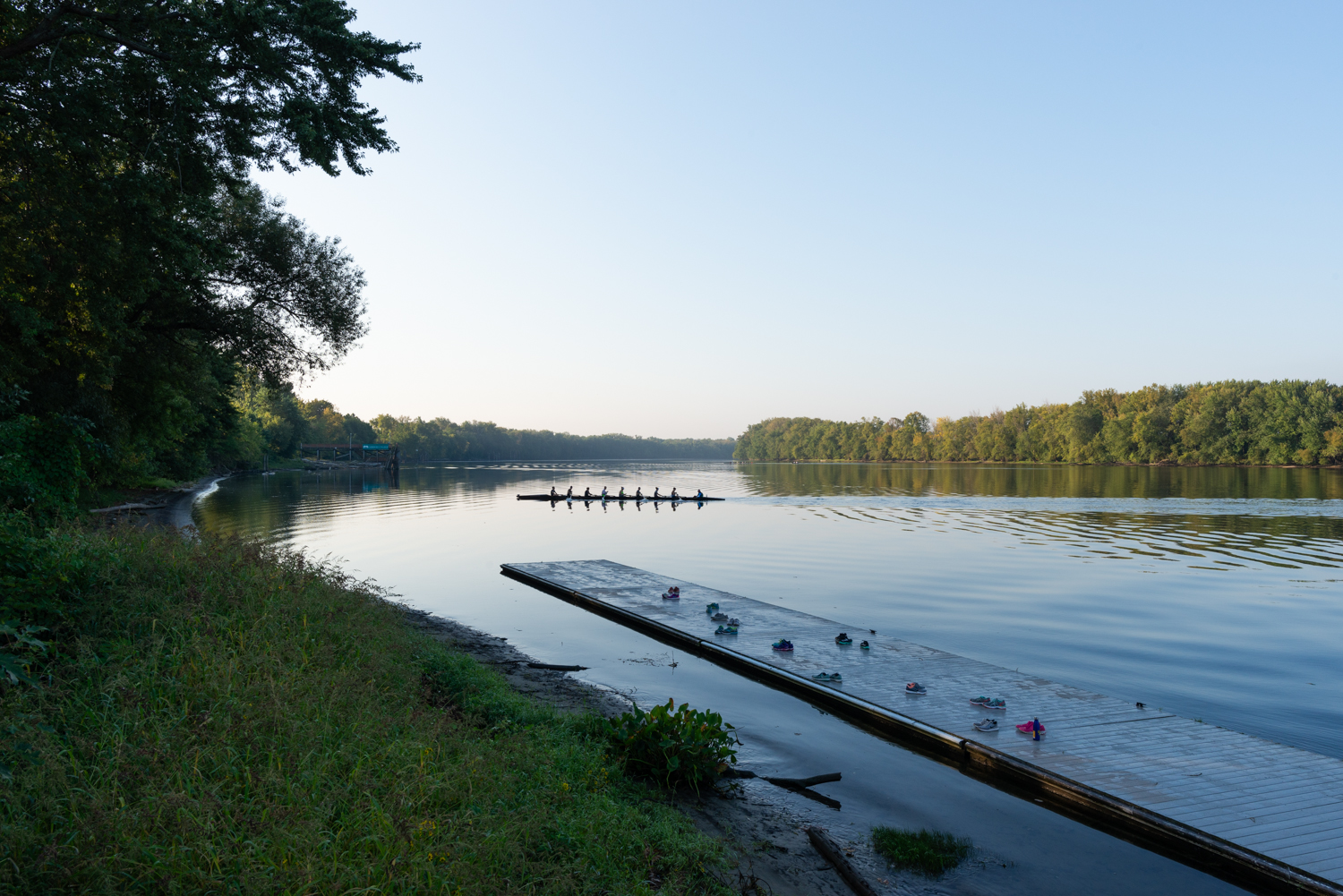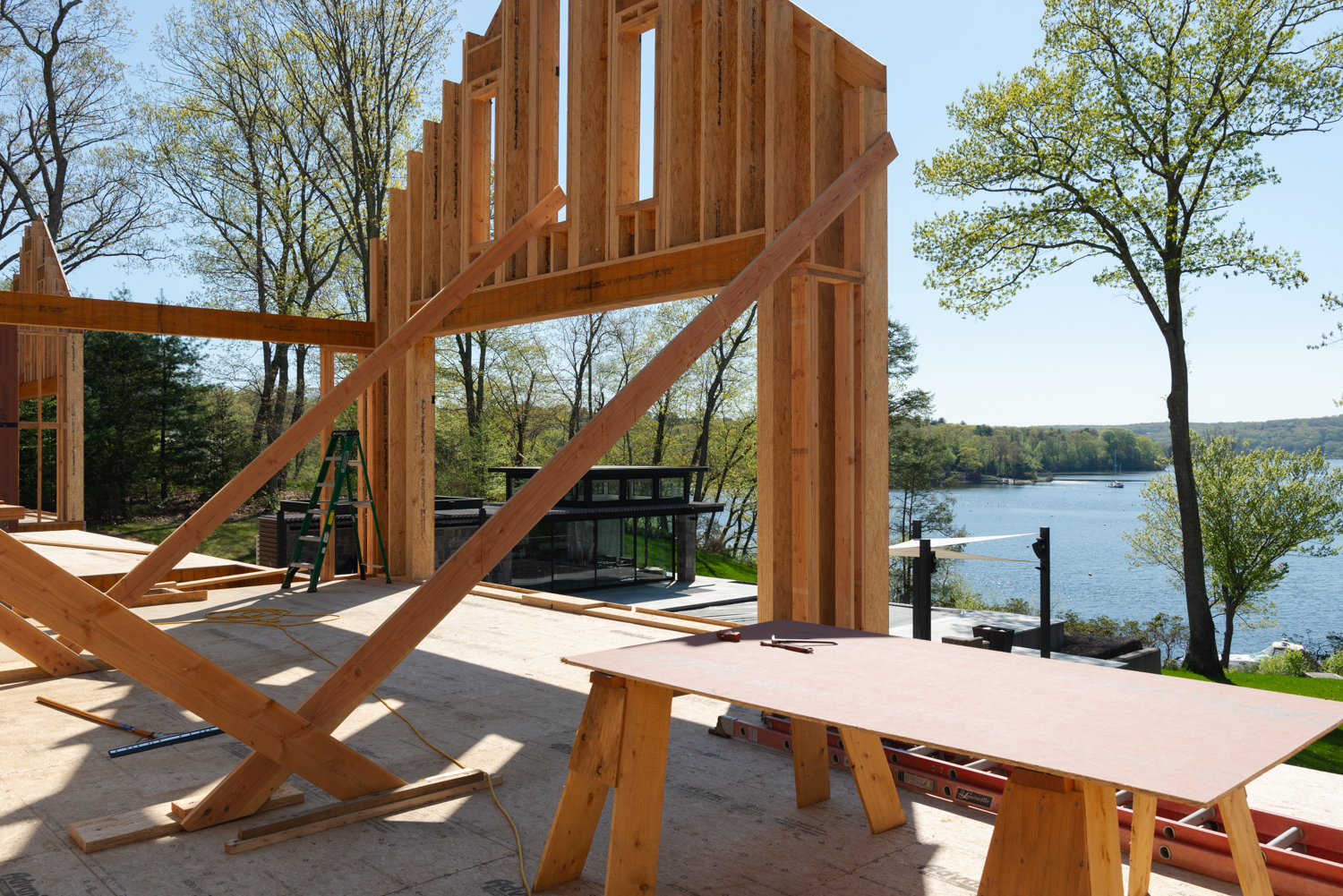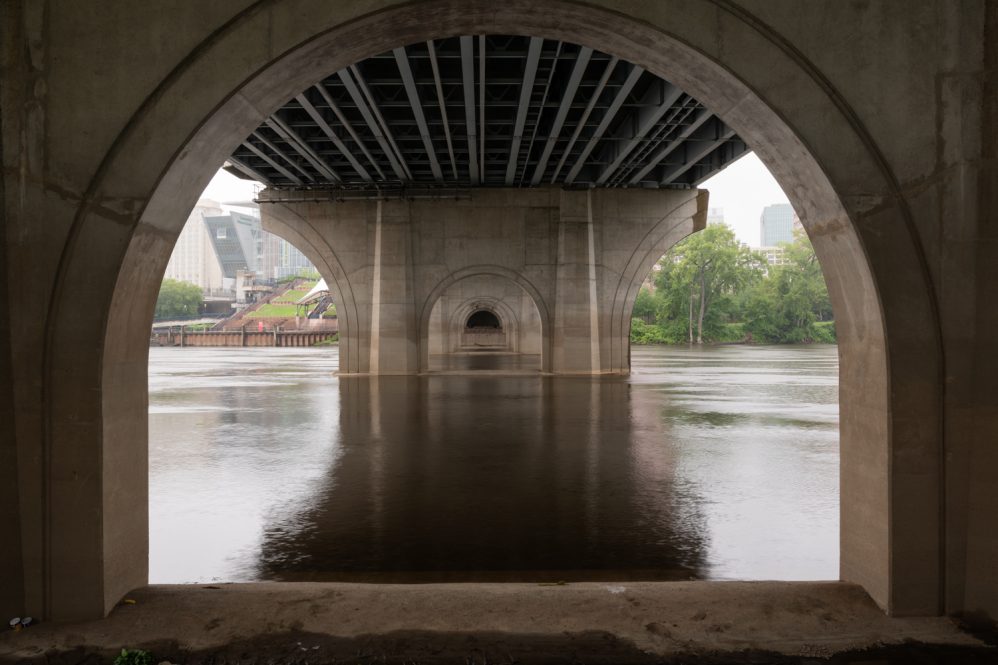Janet L. Pritchard’s photographic study of the Connecticut River watershed started with a plate of homemade potato salad, garden greens, and a piece of shad.
When she conceived the idea for the project in 2017, her first stop was to the Essex Rotary Club Shad Bake. The way they cook the fish – using galvanized nails to pin strips of pork fat over seasoned fish fillets then tipping the oak planks vertically over a fire to allow the oils to run out – particularly interested her, she says.
She also was interested in meeting the people who filleted the thousands of tiny bones from the fish, those who came to the bake, even those who stayed away. What were their stories? How did they relate to that section of the river’s 410-mile span? What do they think about the river? What’s the view out their windows? How does the river affect their daily lives?
A piece of fish – much different tasting than the bluefish she grew up catching and turning her nose up at during summers on Long Island Sound – started the journey that she expects will be ongoing at least a few more years as part of “Abiding River: Connecticut River Views & Stories.”
With several dozen photographs from the project on display at the Alexey von Schlippe Gallery of Art at UConn Avery Point until April 28, Pritchard, a photography professor in UConn’s Department of Art and Art History, says she expects “Abiding River” to be as large as “More than Scenery: Yellowstone, An American Love Story,” a 15-year endeavor that culminated in a 240-page book published in late 2022.
The river, with 148 tributaries and 7.2 million acres, merits just as much attention.
A single entity; not a composition of pieces
“Stage One of these projects is to start to figure out what’s there, what’s interesting, what’s happening, what do I need to know about, what do I need to learn more about, and who do I need to talk to,” she says, quoting an 11th century Japanese gardening book that in part says, “begin by considering the lay of the land and water.”
By the end of the first half of her Guggenheim Fellowship in 2019, Pritchard says she got to that place and around that time happened to share her book plans with friend Walter Woodward, UConn professor emeritus and retired state historian.
He implored her not to structure the book in terms of regional identities – that is, the Great North Woods, the Northeast Kingdom, the Upper Valley, and down to what Pritchard has dubbed “Second Home Country” near the mouth in Connecticut.
The river is a single entity, not a composition of pieces into a whole, he told her.

“I thought about that for a couple of years, and recently concluded the book is going to reflect the fact that the river – the watershed, the hydrological system – is a thing. One thing. But the way people live with the river is not. Each region is different and so are the people’s lives and experiences,” she says.
In images of the fish viewing room at the Robert E. Barrett Fishway at the Holyoke Dam in Massachusetts, harvested broadleaf tobacco in Massachusetts, used hypodermic needles tossed aside at the Cornish-Windsor covered bridge in New Hampshire, the inside of an electrical substation in Vermont, even the Trinity College women’s rowing team at practice in East Hartford, she conveys the river’s reach into daily life.
“Historically, it’s a landscape of many different people,” she says, “beginning with the Indigenous people who have been here almost since the glaciers receded. It’s a landscape from which people have been pushed out. But it’s also a landscape of tremendous history in the formation of our nation. It’s a landscape of tremendous history in terms of technology. It’s a landscape of tourism and what that does to a region.”
And all along there are so many bridges.
Photographs of the French King Bridge in Erving, Massachusetts, and the Founder’s Bridge in Hartford, which she’s privately titled “Cathedral of the Highways,” are part of the Avery Point exhibition.
She says these bridges and others play a significant role in the lives of those who live near and on the river, with people crossing the waterway for work, family, business, and recreation – even if that means, in Vermont and New Hampshire, leaving one state for the other.
That’s one of the reasons she’s also included in the exhibition a photograph of the Rocky Hill-Glastonbury ferry in Connecticut, one of two ferries on the river that bills itself the oldest continuously operating ferry in the U.S.
‘Human influence all along the river’
“I feel strongly about protecting the environment. We need the environment to stay healthy and protect us,” she says.
But along the river, a competition of interests, between the needs of people and the needs of the wild, is noticeable.
“In this project I’ve been learning about boreal forests in the Great North Woods of New Hampshire, which seem tremendously pristine, but, in fact, there’s ample evidence of acid raid,” she says. “You can find human influence all along the river.”
Most of the Google alerts Pritchard gets on the Connecticut River, she says, are for news stories about bodies and cars being dragged out, flooding the result of excess rainfall and snowpack, and sewage spills: “The river is a notable example of what’s happening in our time in terms of lack of vigilance as our government collapses.”
Here in Connecticut, she says, the river is a socioeconomic dividing line, breaking the state in half. Fairfield and Litchfield counties in the west, for instance, have residents with far more wealth than those living in the east at the Rhode Island border.

A photograph of a home under construction in the Hamburg Cove area that’s eight miles north of the Sound is evidence of that, she says. It’s a sight she happened upon in 2018 as she was traveling through “Second Home Country.”
The opportunity was there, so she took the picture. But oftentimes, Pritchard says, photos are more deliberate and planned – like when she returned to the same blooming wisteria vine three consecutive years to catch it at its perfect peak.
“When I was younger – and I still do this but I’m better than I used to be – and I would go out to make photographs, I would have a list of things to shoot and cross them off the list,” she says. “Those photographs were OK. But when my list was done and I could open my awareness, that’s where the good photographs were, when I found something I didn’t expect.”
Much the same as she didn’t expect to like the taste of shad – although “The Founding Fish” by John McPhee about shad helped her understand its significance to the river and prompted her initial interest – Pritchard says she learned, very early on when still ruminating on the idea for the project, that even as a New Jersey girl her family roots extended into the Connecticut River valley.
Her grandfather grew up in Wethersfield and genealogical research shows an early family member in Connecticut in 1646.
“It’s no wonder my wife and I chose to raise our three sons in the Quiet Corner,” she says.
Over the years since, Pritchard says she’s learned countless more about the river – like, there are more than a dozen dams across the main stem and they’re all for hydrological electricity development, operated by multinational corporations, save the Holyoke Dam that’s run by a co-op.
She also learned that until recently, Massachusetts property owners who had on their land one of the thousands of smaller dams on the river weren’t liable for damage downstream if their dam broke. That law recently was changed and many of the dams were removed, which has inadvertently resulted in a healthier ecosystem.
On one trek out to take pictures, Pritchard says she went seeking a bald eagle nest – even though she says ospreys and their return to the area tell a better ecological story – and found it in the tree line adjacent to a homeowner’s beautifully manicured lawn.
“You don’t even know the eagle is in the picture because it’s so small,” she explains. “But the important part of the story is that the husband grew up in that town, went away for school and work, and when he and his wife retired and moved back, he remembered the house from when he was young.”
She continues, “Back then, there were no windows on one side of the home because the river was so polluted. Today, there are windows, and the river is gorgeous.”
More than two dozen photographs from “Abiding River: Connecticut River Views & Stories” are on display as part of an exhibition by the same name at the Alexey von Schlippe Gallery of Art at UConn Avery Point until April 28.


